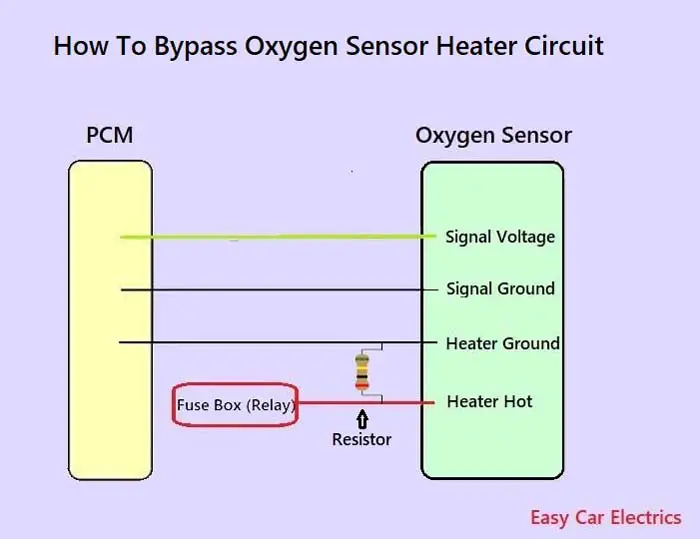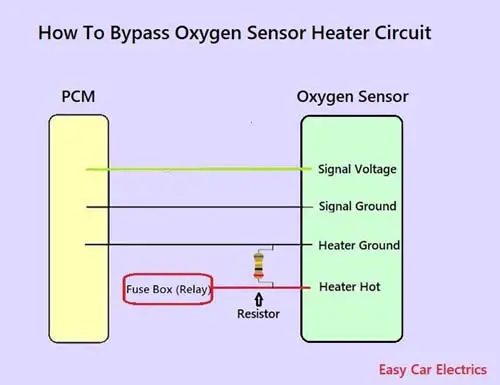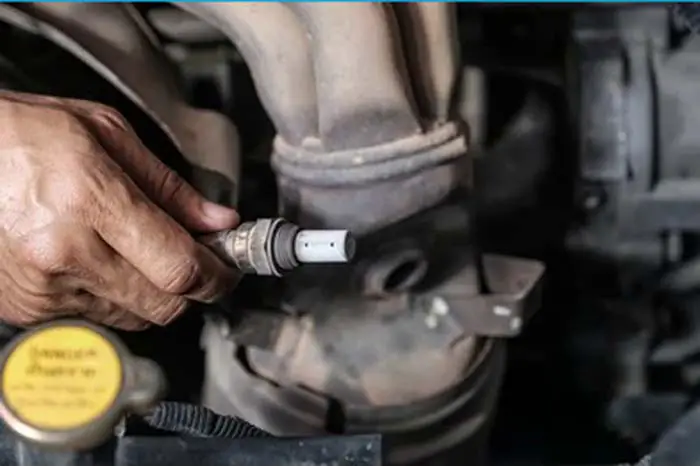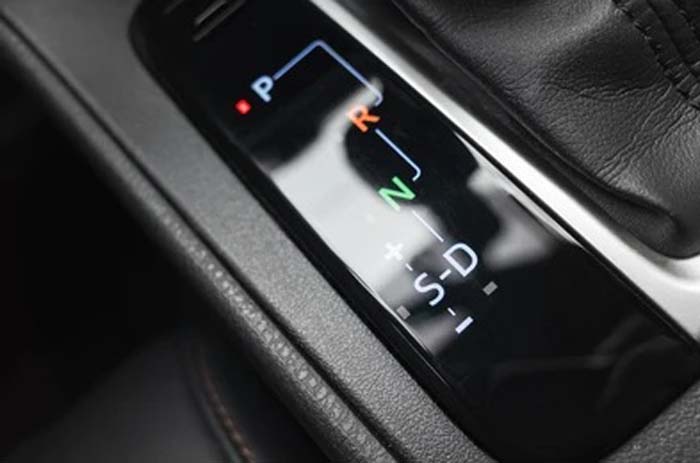
The heater in the oxygen sensor’s circuit is used to heat the area of the oxygen sensor in order to create a voltage signal that reflects the oxygen level in the exhaust gas. When this circuit does not function properly, the oxygen sensor will not generate a signal, which can lead the engine to run erratically and may show the check engine light.
Heaters for oxygen sensors may damage. There are, however, other reasons for a heater DTC. As vehicles age, the heating circuit for the oxygen or air/fuel ratio sensor will almost certainly fail. When this happens, the simplest solution is to replace the sensor.
There are different methods to bypass an oxygen sensor, including replacing the original oxygen sensor with a replacement sensor. Another method is to attach the resistor of a certain resistance value to the heater circuit of the oxygen sensor. This powerful post will teach you how to bypass the heater circuit of an O2 sensor in five steps.
Bypass O2 Sensor Heater Circuit: O2 Sensor Resistor Bypass

If you have a diagnostic code for a heated oxygen sensor failure, you can bypass the oxygen sensor heating element (heater). To do this, you must attach the resistor of specified resistance with the oxygen sensor heating element circuit, which is explained below.
Following are the five steps that should be followed for bypassing an oxygen sensor’s heater circuit in your vehicle.
- First, the engine has to be cooled off, as the engine and the exhaust are linked. As this particular work is related to the engine and exhaust, the vehicle has to be at its normal operating temperature for the safety of the driver.
- Now, remove the oxygen sensor, and examine the wires of the sensor’s oxygen outlet. There will be two sets of wires for the heating element cable connecting here.
- So now, insert the resistor in between the wires of the heater circuit according to the resistance of the oxygen sensor. You can check the oxygen sensor resistance by checking the heater circuit with a multimeter. Oxygen sensor heater circuits usually have about 5, 6, or 7 ohms resistance.
- Solder the resistor to the negative and positive wires of the heater circuit. And after that cover up the connection for protection purposes and to avoid short circuits. You can attach this resistor in any desired direction.
- Next, drive the car at a slower speed so that the electronic control module could take the data from the oxygen sensor and disappear the check engine light.
Attaching a resistor directly to your present O2 sensor is a superior technique because you already have a functional sensor that you know is compatible with your vehicle. That implies you won’t have to look for a compatible sensor.
Placing a resistor in the heater circuit of the oxygen sensor circuit is detected by the computer as a sign that the sensor is functioning properly. Possibly, you can avoid having the light of the check engine come on all the time by bypassing the oxygen sensor.
Related Post: How To Bypass Oxygen Sensor: 3 Guaranteed Methods – Bypass O2 Sensor Simulator
FAQs
In order for the oxygen sensor to function properly, it needs a heater. An oxygen sensor needs a heater because it needs to be at a high temperature (600 degrees or higher) before it will start to generate a signal. The heater helps to ensure that the oxygen sensor is at the correct temperature. Without the heater, the oxygen sensor would not be able to function properly.
If an oxygen sensor heater fails, it will not be able to heat up the oxygen sensor, as a result, the oxygen sensor will not work efficiently. This can cause the oxygen sensor to produce inaccurate readings, which can lead to engine performance issues. The check engine light will also come on and it will usually trigger a separate code.
The time it takes for an oxygen sensor to heat up depends on several factors, including the type of sensor, the vehicle’s engine speed, and ambient air temperature. In general, however, it takes about 3-5 minutes for an oxygen sensor to reach its operating temperature.
Sign Up




